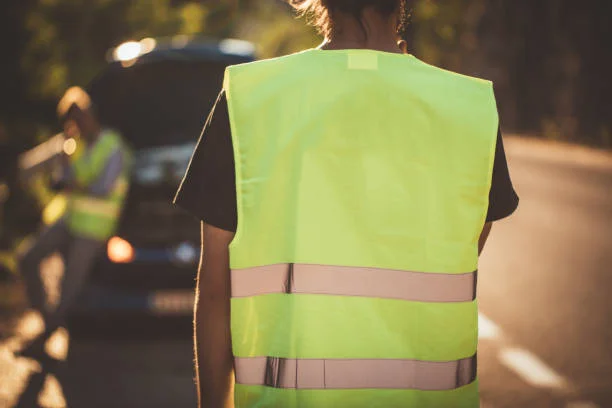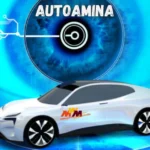One of the most important safety considerations for anyone working at night or around moving cars is visibility. A Safety Vest is an important piece of protective covering aimed at helping to keep workers safe and making them visible to others, particularly drivers. Construction workers and utility personnel as well as emergency responders all wear these vests so that everyone on the site is easy to see. This reduces the likelihood of an accident.
Hi-vis vests aren’t an industrial only tool. They are important when street lights are off and when vehicles are on the road. These vests allow rapid recognition of a human and passing cars and people. This might prevent accidents. This makes these safety vests necessary for all workers.
Hi-Vis Vests Defined
Hi-Vis Vests are made of bright fluorescent materials and have reflective materials placed in a strategic manner to aid visibility during night hours. They are generally made in bright shades of yellow, orange or lime green which are easily visible during the day. The reflective materials shine at night, making people even more visible to drivers.
The combined construction of the vest provides around the clock protection. These vests are staples in the construction, emergency response, maintenance and traffic control industries. The primary message is safety, making sure others can see you, especially in low visibility situations.
ANSI 107 Standard Overview
The ANSI 107 standard sets the industry standard for high-visibility safety apparel. Established by the American National Standards Institute, it outlines the performance criteria for the design, color, and placement of reflective materials so that safety garments are visible across different environments.
Classification Levels
The ANSI 107 standard outlines the distribution of safety vests into 3 main classes depending on the level of risk and the visibility requirements.
Class 1: This is for workers in low-risk environments like parking attendants and warehouse staff.
Class 2: This is for workers in moderate-risk environments like construction or maintenance work near traffic.
Class 3: This is for workers in high-risk environments like construction on the highway, emergency response, and heavy traffic.
Every classification makes certain that the vest meets minimum standards in surface area and reflectance. By complying with ANSI 107, the vest has undergone testing and confirmed its safety.
Why Hi-Vis Vests Are Important for Night Work
There are certain factors that make work at night different from work during the day. These include reduced visibility and lighting, fast-moving vehicles, and greater risk for accidents. Hi-vis vests are designed to address these issues.
The light from a car’s headlights reflects off the strips of a hi-vis vest and bounces back to the car, which makes the wearer easily seen from hundreds of feet away, giving the driver ample time to respond.
Road maintenance crews, tow truck drivers, and emergency responders use these vests to maintain safety and visibility. Without these vests, they become part of the dark scenery, which can lead to life-threatening situations.
Roadside Protection: Safeguarding Workers and Drivers
Hi-vis safety vests protect workers but they also allow drivers to adjust their speed and actions to avoid hitting the workers, leading to a win-win situation. When drivers see a worker or a work zone, they can slow down or change lanes, which minimizes the risk of road rage incidents.
Enhanced Traffic Awareness
Reflective vests are a signal to motorists that people are working nearby and that they should exercise caution. This promotes and enforces safer driving behavior, especially in areas with previously mentioned road closures. Traffic management agencies have made it hi-vis gear mandatory during all roadside operations.
Important Qualities of Good Hi-Vis Vests
Hi-vis vests provide different degrees of protection. When selecting one, pay attention to:
1. Placement of Reflective Tapes
To ensure 360 degrees of visibility, reflective tapes should be placed on the torso, shoulders, and back.
2. Brilliant, Fluorescent Colors
The best vests are in bright, neon colors such as yellow-green and orange-red for the best contrast with the surrounding environment.
3. Breathable and Sturdy Material
The fabric should be tough for difficult working conditions but also allow airflow, usually provided by lightweight breathable polyester mesh material.
4. Changeable Fit
Vests should not be a restriction. Elastic waists and Velcro closures help keep the vest secure but allow freedom of movement.
5. Useful Pockets
Additional pockets are the best way to keep small tools like radios, flashlights, and pens secure, but also readily accessible for the user.
A good hi-vis vest should provide safety without sacrificing comfort to be worn for long periods.
Hi-Vis Vests for Different Jobs
Hi-vis vests are tailored to different professions, each presenting safety requirements in a different way:
– Construction Workers: Need Class 2 or Class 3 vests that are reinforced and have tool pockets.
– Traffic Controllers: Use Class 3 vests with full sleeves for maximum coverage. Warehouse Workers: Prefer lightweight, breathable mesh vests.
– Emergency Responders: Favor breakaway vests, which can be quickly removed to avoid accidents.
Visibility is ascertained and is custom tailored to the work environment and job hazards to the individual workers.
Maintaining Hi-Visibility Vests
Hi-visibility vests must be cleaned and maintained in order to be effective. Dirt, grease, and general wear can detract from brightness and reflectivity, which is critical to effective visibility.
Care Tips
– To avoid damaging the reflective material, always wash according to care instructions.
– Vests must be stored in the shade to avoid color loss due to sunlight exposure.
– Vests must be replaced as soon as reflective materials begin to lose their shine or begin to peel or crack.
Hi-visibility Vests should be replaced every six to twelve months. Regular upkeep and replacement schedule ensures that the wearer and the Hi-visibility vest will comply with the ANSI 107 standard to the vest to ensure the maximum level of safety is present.
Conclusion: Be Seen, Stay Safe
Hi-visibility vests offer one of the highest safety levels for workers operating in poorly lit environments. For maximum safety, ensure that your Hi-Visibility Safety Vest also meets the ANSI 107 standard. This level of safety on the vest reduces road and worksite accidents as the vests drastically improve visibility.
All reflective stripes and neon panels have a purpose: to make sure you stay visible and stay alive! If you are tasked with fixing a road, are responsible for directing traffic, or are engaged in any emergency response, a high-quality hi-vis vest will make sure you are seen and kept safe by everyone in your surroundings.
When you work at night, your safety depends on your ability to be seen. Visibility is not a choice. It is a form of protection.






